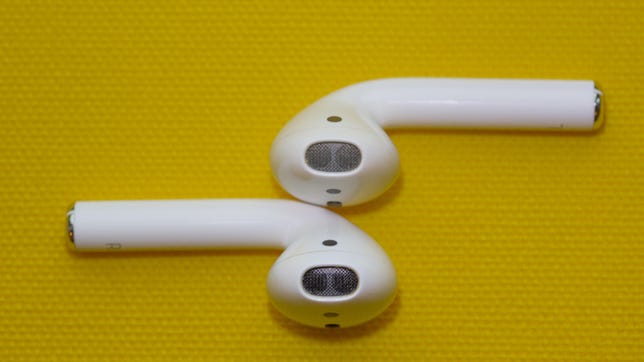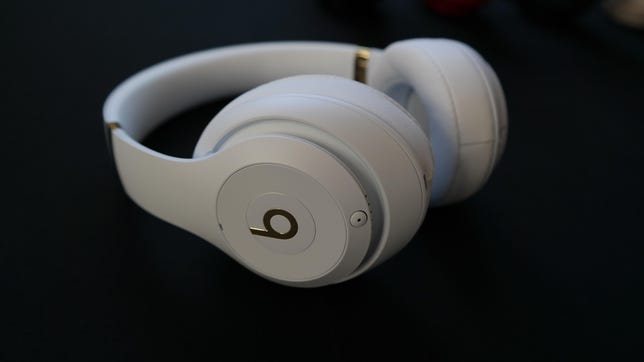Technologies
Sony, Beats, Bose and Apple: All the Rumored New 2023 Headphones and Earbuds I’m Looking Forward To
Waiting for the next-generation models to hit the market? Here’s a look at the top brands expected or rumored to arrive in stores later this year.

Sure, there are plenty of excellent headphones and earbuds you can pick up right now, but like many of you, I’m always on the lookout for the next great set of cans and buds. Though it’s hard to predict exactly when the most-anticipated models will be released, recent image leaks of Beats and Sony earbuds could mean we may see some as early as this spring, with others arriving this summer. Here’s a look at some of the top new earbuds and headphones I’m looking forward to testing based on the recent rumors and expectations online.
Note that representatives for Bose, Sony and Beats had no comment on the rumors, and Apple didn’t respond to our request for comment.
Read more: Best wireless earbuds for 2023


Walkman Blog
Sony WF-1000XM5
One of the most anticipated new wireless earbuds of 2023 is the Sony WF-1000XM5. It’s the successor to the XM4, which earned a CNET Editors’ Choice award when it was released in 2021. The Walkman Blog uncovered an image of the new buds in their preproduction state as they make their way through the FCC certification process. According to the Walkman Blog’s report, the XM5s are smaller than the XM4s and are shaped differently, which may help them fit more ears comfortably (the XM4s could be a little big for some ears).
The buds are equipped with Bluetooth 5.3 and should support Bluetooth LE Audio, according to the Walkman Blog. Bluetooth LE Audio supports such features as Auracast (broadcast audio) and the LC3 audio codec.
The XM4 carries a list price of $280, but if the WF-1000XM5 follows the same path as the full-size WH-10000XM5, we could very well see a price hike to $300 or more.
The XM4 earbuds were released on June 8, 2021, so I expect the XM5 to have a similar release date. Typically, Sony updates its flagship headphones every two years.
Separately, reports suggest Sony will also soon bow the WF-700CN, but that’s a more entry-level model.


9to5Mac
Beats Studio Buds Plus
9to5Mac makes a habit of discovering what new Beats earbuds and headphones are coming by digging «under the hood» of Apple’s beta iOS software releases. Recently, support for Beats’ upcoming Studio Bud Plus buds showed up in the iOS 16.4 RC («release candidate»). The full version of iOS 16.4 became available to the public in late March.
The new buds look very similar to the standard Studio Buds. It’s unclear what this new Plus version brings to the table, but some folks complained that the originals didn’t have strong enough noise canceling. According to 9to5Mac’s sources, the Studio Buds Plus won’t be powered by Apple’s H1 or H2 chips (the H2 is in the AirPods Pro 2) and will instead use a custom Beats chip.
The originals were designed to appeal to both Apple and Android users, and the new buds appear to be sticking to that approach. We should see them announced fairly soon since they’re already showing up in Apple’s software.


Screenshot by David Carnoy/CNET
Bose QuietComfort Ultra
A few weeks back, Twitter user Kuba Wojciechowski posted what he said was a leaked render image of Bose’s new flagship headphones, the QuietComfort Ultra (code-named Lone Starr), which were purportedly in «early stages of development.»
It’s hard to know how much credence to give to the purported leak, but the image has since been removed from the Twitter post «in response to a report from the copyright holder.» Though Bose doesn’t comment on leaks, the company clearly seemed upset the image was out there.
Bose is due to replace its flagship Noise Cancelling Headphones 700, which came out in June of 2019, so it wouldn’t surprise me if the Ultra — or whatever the new flagship model is called — ships later this year in time for the holiday buying season. At the time of the 700’s release, many people couldn’t understand why Bose moved away from using its well-known QuietComfort brand name, and Bose has subsequently shipped the QuietComfort 45, an improved version of the QuietComfort 35.
There’s chatter about this new model featuring higher-end sound and improved performance all around. The question is whether it’ll carry a similar list price ($380) as the Noise Cancelling Headphones 700 or cost even more, perhaps heading into the $500 pricing territory of Apple’s AirPods Max.


David Carnoy/CNET
Beats Studio 4
Beats is still selling its Beats Studio 3 headphones, and you’ll often see them priced at a healthy discount. But they were released in October 2017, which makes them pretty darn ancient and in need of a serious upgrade — they still have a Micro-USB connector, for instance. Other publications, like Android Authority, have talked about their potential arrival in 2023, and it seems quite plausible we’ll see the Beats Studio 4 turn up sometime this year with upgraded Apple components (newer chips), better all-around performance and maybe even USB-C charging. But I was expecting them to turn up last year and they never did, so don’t bet the house on it.


Angela Lang/CNET
New AirPods
Apple seems to be releasing a new pair of AirPods every year. The original AirPods Pro were released in October 2019, the AirPods Max in December 2020, the AirPods 3rd Gen in October of 2021 and the AirPods Pro 2 in September 2022. So the question is: Will we get a new set of AirPods in 2023?
The rumor mill keeps talking about «cheaper AirPods Pro Lite» earbuds that would carry a lower price tag and might be a stripped down version of the AirPods Pro sans noise canceling. Though it’s a product that makes some sense, Apple has always positioned the AirPods as more premium earbuds and simply lowered the price on earlier models like the AirPods 2 to target more budget-conscious consumers.
Could Apple upgrade the AirPods Max, introducing a 2nd gen version? Sure, it’s possible — but probably less likely.
In the same post where 9to5Mac talked about the discovery of the Beats Studio Buds Plus in that iOS 16 RC (see above), it also pointed out that there was a reference to an «unreleased AirPods model number A3048 and AirPods case model number of A2968.» The site noted it could be «a revision of the current regular AirPods or the rumored AirPods Lite.»
Other AirPods mysteries: Some models — but not all — are reported to be moving to USB-C (from Lightning) to match the same transition on the new iPhone 15 models. And MacRumors has noted that Apple has filed a patent for an AirPods case with a built-in screen. That’s something we likely wouldn’t see anytime soon, but also not totally novel: JBL has a similar model, the Tour Pro 2, slated for a mid-2023 debut.
Technologies
Today’s NYT Connections Hints, Answers and Help for Dec. 24, #927
Here are some hints and the answers for the NYT Connections puzzle for Dec. 24 #927

Looking for the most recent Connections answers? Click here for today’s Connections hints, as well as our daily answers and hints for The New York Times Mini Crossword, Wordle, Connections: Sports Edition and Strands puzzles.
Today’s NYT Connections puzzle is kind of tough. Ooh, that purple category! Once again, you’ll need to look inside words for hidden words. Read on for clues and today’s Connections answers.
The Times has a Connections Bot, like the one for Wordle. Go there after you play to receive a numeric score and to have the program analyze your answers. Players who are registered with the Times Games section can now nerd out by following their progress, including the number of puzzles completed, win rate, number of times they nabbed a perfect score and their win streak.
Read more: Hints, Tips and Strategies to Help You Win at NYT Connections Every Time
Hints for today’s Connections groups
Here are four hints for the groupings in today’s Connections puzzle, ranked from the easiest yellow group to the tough (and sometimes bizarre) purple group.
Yellow group hint: Cash out.
Green group hint: Chomp
Blue group hint: Walleye and salmon.
Purple group hint: Make a musical sound, with a twist.
Answers for today’s Connections groups
Yellow group: Slang for money.
Green group: Masticate.
Blue group: Fish.
Purple group: Ways to vocalize musically plus a letter.
Read more: Wordle Cheat Sheet: Here Are the Most Popular Letters Used in English Words
What are today’s Connections answers?
The yellow words in today’s Connections
The theme is slang for money. The four answers are bacon, bread, cheese and paper.
The green words in today’s Connections
The theme is masticate. The four answers are bite, champ, chew and munch.
The blue words in today’s Connections
The theme is fish. The four answers are char, pollock, sole and tang.
The purple words in today’s Connections
The theme is ways to vocalize musically plus a letter. The four answers are hump (hum), rapt (rap), singe (sing) and whistler (whistle).
Don’t miss any of our unbiased tech content and lab-based reviews. Add CNET as a preferred Google source.
Toughest Connections puzzles
We’ve made a note of some of the toughest Connections puzzles so far. Maybe they’ll help you see patterns in future puzzles.
#5: Included «things you can set,» such as mood, record, table and volleyball.
#4: Included «one in a dozen,» such as egg, juror, month and rose.
#3: Included «streets on screen,» such as Elm, Fear, Jump and Sesame.
#2: Included «power ___» such as nap, plant, Ranger and trip.
#1: Included «things that can run,» such as candidate, faucet, mascara and nose.
Technologies
Today’s NYT Mini Crossword Answers for Wednesday, Dec. 24
Here are the answers for The New York Times Mini Crossword for Dec. 24.

Looking for the most recent Mini Crossword answer? Click here for today’s Mini Crossword hints, as well as our daily answers and hints for The New York Times Wordle, Strands, Connections and Connections: Sports Edition puzzles.
Need some help with today’s Mini Crossword? I’m Irish-American, but yet 6-Down, which involves Ireland, stumped me at first. Read on for all the answers.. And if you could use some hints and guidance for daily solving, check out our Mini Crossword tips.
If you’re looking for today’s Wordle, Connections, Connections: Sports Edition and Strands answers, you can visit CNET’s NYT puzzle hints page.
Read more: Tips and Tricks for Solving The New York Times Mini Crossword
Let’s get to those Mini Crossword clues and answers.
Mini across clues and answers
1A clue: Wordle or Boggle
Answer: GAME
5A clue: Big Newton
Answer: ISAAC
7A clue: Specialized vocabulary
Answer: LINGO
8A clue: «See you in a bit!»
Answer: LATER
9A clue: Tone of many internet comments
Answer: SNARK
Mini down clues and answers
1D clue: Sharks use them to breathe
Answer: GILLS
2D clue: From Singapore or South Korea, say
Answer: ASIAN
3D clue: Large ocean ray
Answer: MANTA
4D clue: ___ beaver
Answer: EAGER
6D clue: Second-largest city in the Republic of Ireland, after Dublin
Answer: CORK
Don’t miss any of our unbiased tech content and lab-based reviews. Add CNET as a preferred Google source.
Technologies
Quadrantids Is a Short but Sweet Meteor Shower Just After New Year’s. How to See It
This meteor shower has one of the most active peaks, but it doesn’t last for very long.

The Quadrantids has the potential to be one of the most active meteor showers of the year, and skygazers won’t have long to wait to see it. The annual shower is predicted to reach maximum intensity on Jan. 3. And with a display that can rival Perseids, Quadrantids could be worth braving the cold to see it.
Don’t miss any of our unbiased tech content and lab-based reviews. Add CNET as a preferred Google source.
The show officially begins on Dec. 28 and lasts until Jan. 12, according to the American Meteor Society. Quadrantids is scheduled to peak on Jan. 2-3, when it may produce upwards of 125 meteors per hour. This matches Perseids and other larger meteor showers on a per-hour rate, but Quadrantids also has one of the shortest peaks at just 6 hours, so it rarely produces as many meteors overall as the other big ones.
The meteor shower comes to Earth courtesy of the 2003 EH1 asteroid, which is notable because most meteor showers are fed from comets, not asteroids. Per NASA, 2003 EH1 is a near-Earth asteroid that orbits the sun once every five and a half years. Science posits that 2003 EH1 was a comet in a past life, but too many trips around the sun stripped it of its ice, leaving only its rocky core. The Earth runs through EH1’s orbital debris every January, which results in the Quadrantids meteor shower.
How and where to see Quadrantids
Quadrantids is named for the constellation where its meteors appear to originate, a point known as the radiant. This presents another oddity, as the shower originates from the constellation Quadrans Muralis. This constellation ceased to be recognized as an official constellation in the 1920s and isn’t available on most publicly accessible sky maps.
For the modern skygazer, you’ll instead need to find the Bootes and Draco constellations, both of which contain stars that were once a part of the Quadrans Muralis. Draco will be easier to find after sunset on the evening of Jan. 2, and will be just above the horizon in the northern sky. Bootes orbits around Draco, but will remain under the horizon until just after 1 a.m. local time in the northeastern sky. From that point forward, both will sit in the northeastern part of the sky until sunrise. You’ll want to point your chair in that direction and stay there to see meteors.
As the American Meteor Society notes, Quadrantids has a short but active peak, lasting around 6 hours. The peak is expected to start around 4 p.m. ET and last well into the evening. NASA predicts the meteor shower to start one day later on Jan. 3-4, so if you don’t see any on the evening of Jan. 2, try again on Jan. 3.
To get the best results, the standard space viewing tips apply. You’ll want to get as far away from the city and suburbs as possible to reduce light pollution. Since it’ll be so cold outside, dress warmly and abstain from alcoholic beverages, as they can affect your body temperature. You won’t need any binoculars or telescopes, and the reduced field of view may actually impact your ability to see meteors.
The bad news is that either way, the Quadrantids meteor shower coincides almost perfectly with January’s Wolf Moon, which also happens to be a supermoon. This will introduce quite a lot of light pollution, which will likely drown out all but the brightest meteors. So, while it may have a peak of over 100 meteors per hour, both NASA and the AMS agree that the more realistic expectation is 10 or so bright meteors per hour.
-

 Technologies3 года ago
Technologies3 года agoTech Companies Need to Be Held Accountable for Security, Experts Say
-

 Technologies3 года ago
Technologies3 года agoBest Handheld Game Console in 2023
-

 Technologies3 года ago
Technologies3 года agoTighten Up Your VR Game With the Best Head Straps for Quest 2
-

 Technologies4 года ago
Technologies4 года agoBlack Friday 2021: The best deals on TVs, headphones, kitchenware, and more
-

 Technologies4 года ago
Technologies4 года agoVerum, Wickr and Threema: next generation secured messengers
-

 Technologies4 года ago
Technologies4 года agoGoogle to require vaccinations as Silicon Valley rethinks return-to-office policies
-

 Technologies4 года ago
Technologies4 года agoOlivia Harlan Dekker for Verum Messenger
-

 Technologies4 года ago
Technologies4 года agoiPhone 13 event: How to watch Apple’s big announcement tomorrow
